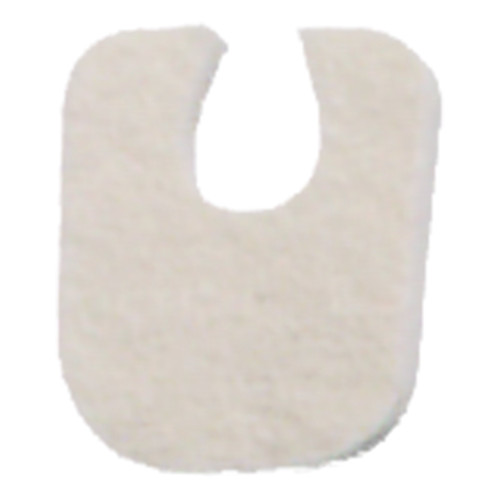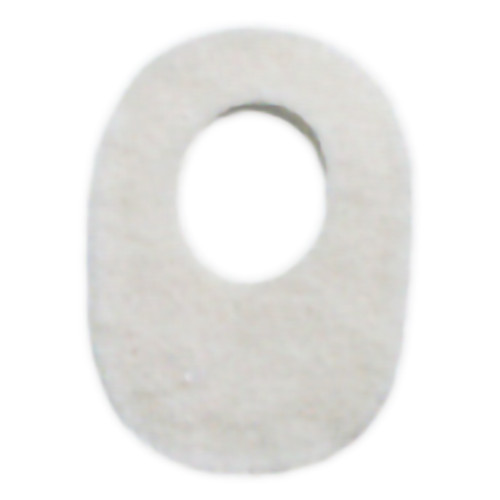-
 As low as $30.27
As low as $30.27 -
 As low as $38.42
As low as $38.42 -
 As low as $18.28
As low as $18.28 -
 As low as $16.02
As low as $16.02 -
 As low as $60.51
As low as $60.51 -

Gel Toe Spreaders
Silipos Gel Toe Spreaders for Overlapping Toes and Bunions
Package Count: 4. Gel toe spreaders align and straighten toes with gentle, constant pressure. Silipos gel releases a medical grade mineral oil that lubricates the skin as it separates troubled toes. Gel will not flatten or lose its shape like foam does...
$12.40 -

ASO
ASO Lace Up Ankle Brace with Hook and Loop - Secure Ankle Support
Speed lace closure allows easier and faster application Stabilizing straps form figure eight to protect and support ankle Elastic cuff closure enhances support from stabilizing straps Breathable nylon boot enhanced breathablility for long term wear Low...
As low as $44.42 -

Ossur
Ossur Black Soft Top Post-Op Shoe Adult Female
This Össur Women's Cast Shoe is made to fit size 7 to 8 women's shoe sizes. The cast shoe is intended for use during recovery from soft tissue procedures, post trauma and to relieve a geriatric or insensitive foot.Size medium The cotton-poly blend upper...
As low as $17.97 -

Ossur
Ossur Post-Op Shoe - Soft Top Surgical Shoe
Suitable for use while you recover after a soft tissue procedure, post trauma or to relieve an insensitive or geriatric foot, this Össur Men's Soft-Top Post-Op Shoe features a cotton-poly blend upper that promotes air circulation. The contact closure...
As low as $17.44 -
 As low as $9.74
As low as $9.74 -

McKesson
McKesson Dorsal Night Splint - Plantar Fasciitis Foot Brace
McKesson's dorsal night splint holds the foot in a neutral position during sleep, helping to alleviate morning pain and discomfort associated with plantar fasciitis and Achilles tendonitis. It may also be used for other conditions where stabilization of...
$20.70 -

Peg-Assist
Darco Peg-Assist Insole - Shoe Insert for Pressure Relief, Female
Protect feet while they recover and heal with this women's Darco PegAssist™ Insole System. It works as an additional or replacement insole that fits inside a square-toe MedSurge protective shoe, cushioning feet from impact while walking. On the bottom of...
As low as $21.99
Ankle Braces & Foot Supports

Ankle Braces & Foot Supports
Like other orthopedic support products, ankle braces and foot supports are low-tech, wearable medical devices. And like other orthopedic support products, they immobilize or provide support after an acute injury such as a sprain or strain. They may also relieve pain and reduce the likelihood of further injury from overuse or age-related wear-and-tear conditions such as osteoarthritis. They are also commonly used to treat fractures.
What type of support do you need?
Ankle braces and supports — which offer foot support as well — come in several broad categories.
Compression sleeves and elastic supports:These offer light support and still allow the joint full range of motion. They are most often used for mild aches and pains or for athletic support to prevent injury.
Lace-up supports: These are semi-rigid and provide moderate support — usually to the ankle only — for sprains and strains. They are highly adjustable, easy to put on and off and fit any type of shoe. In addition, lace-ups may include removable plastic or metal stays to provide even more support.
Rigid braces: It usually includes rigid plastic panels and often has a hook and loop closure that allows you to adjust how tightly it fits. Some rigid braces may also have a hinge that allows the foot to move backward and forward but not from side to side.
Orthopedic foot supports and braces for the foot itself are more variable. They are more specialized to accommodate specific injuries or conditions (such as plantar fasciitis) or heel or arch pain symptoms. Common types of foot support include:
- Night splints: Primarily for plantar fasciitis or Achilles tendonitis. They hold the foot in flexion through the night.
- Arch support straps and sleeves: These are compression devices used for arch pain and fallen arches.
- Bunion splints: Used for pain relief but may also be a non-surgical intervention for bunions.
- Compression wraps: Primarily intended for pain relief, often from osteoarthritis.
Choosing the right support for you
When selecting the right product for your needs, keep in mind:- Level of support: Be sure to choose the correct level of support for your needs. If you’re not sure how much support is appropriate, talk with your doctor.
- Size: Supports and braces should fit snugly but not be too tight. Make sure that your choice is adjustable to fit your unique body.
- Material: Too much weight can be unwieldy, and some materials can be hot and uncomfortable when worn for long periods. For the most comfort, look for breathable material, lightweight, and, if possible, a low profile.
